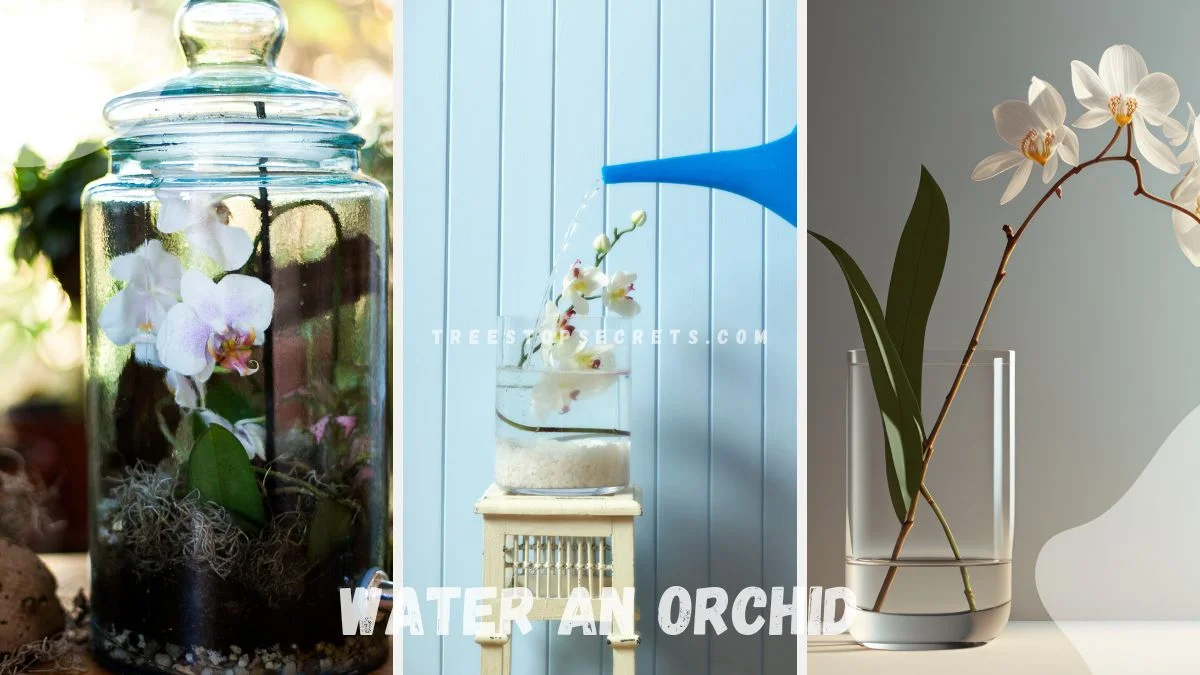How do you water an orchid? If you're wondering how to water an orchid, you've come to the right place. Orchids, known for their delicate beauty, require specific watering techniques to thrive. Understanding the needs of your orchid and the appropriate watering methods is essential to keep your plant healthy. I’ll guide you through the process, whether you're a seasoned gardener or a beginner. By learning the right way to water your orchid, you can ensure it stays vibrant and blooming.
To water an orchid, follow these key steps: first, check if the potting medium is dry before watering. Use lukewarm water, and thoroughly drench the roots while avoiding the leaves and crown to prevent rot. Allow excess water to drain completely from the pot. Typically, water your orchid once a week in cooler months and twice a week during warmer periods, but always adjust based on your environment and the orchid’s specific needs. Ensure the orchid is in a well-draining pot and avoid letting it sit in water, as this can lead to root rot.
For more detailed guidance on orchid care, including how to identify signs of overwatering or underwatering, be sure to check our additional resources and tips. Your orchid’s health and blooming potential can significantly improve with just a few thoughtful adjustments to your watering routine!
Key Takeaways
- Understand your orchid's watering needs by considering its type, environment, and growth stage.
- Avoid common watering mistakes like overwatering or using improper water sources to prevent root rot and other issues.
- Use proper watering techniques such as soaking or drying out methods based on your orchid's specific requirements.
- Take special considerations into account, including humidity levels, potting medium, and air circulation for optimal orchid care.
- Implement advanced tips like adjusting watering frequency seasonally and monitoring plant responses to fine-tune your orchid watering routine.
- Remember that consistent and mindful watering practices are key to maintaining healthy and thriving orchids.
Understanding Orchid Watering Needs
Root Rot Prevention
Regularly check orchid roots for signs of rot to prevent damage to the plant. Ensure proper drainage in the pot to avoid water accumulation that can lead to root rot. Use a well-draining potting mix to maintain optimal moisture levels and prevent waterlogging.
Drainage Importance
Understand the significance of drainage holes in orchid pots as they allow excess water to escape, preventing overwatering. Choose pots with adequate drainage to maintain a healthy root system and water. Consider repotting orchids into containers with drainage holes if needed to avoid water-related issues.
Humidity Requirements
Maintain appropriate humidity levels to support healthy orchid growth and blooming. Utilize water, a humidity tray, or room humidifier to create a suitable environment for orchids. Monitor humidity levels, especially in dry indoor settings, to ensure optimal conditions for your plants.
Common Watering Mistakes
Overwatering Effects
Overwatering an orchid can have detrimental effects on its health. Recognize the symptoms of overwatering, such as yellowing leaves and root rot. These signs indicate excessive moisture in the plant's environment. Understanding how overwatering leads to root rot is crucial. When orchids sit in soggy soil, their roots suffocate due to lack of oxygen, leading to decay and potential death. To prevent overwatering, adjust your watering schedule based on the orchid's specific needs. This helps maintain proper moisture levels for optimal growth.
Mistake Prevention
When it comes to watering orchids, there are several common mistakes to avoid. Learning these errors can help you better care for your plants. One key mistake is watering orchids too frequently, which can drown the roots and cause root rot. It's important to be cautious and allow the top layer of the soil to dry out between waterings. After watering your orchid, ensure there is no standing water in the pot. Avoiding this allows excess water to drain properly, preventing waterlogged conditions that harm the plant.
Watering Techniques for Orchids
Rainwater Use
Consider using rainwater as a natural watering option for orchids. Rainwater is beneficial due to its purity and balanced pH levels, which promote optimal orchid health. To ensure the water's quality, filter rainwater to remove any impurities before using it to water your orchids.
Daily Misting
Explore the practice of daily misting to maintain proper orchid humidity levels. Misting with water helps replicate the natural environment of orchids, promoting healthy growth. Utilize a fine mist spray bottle for gentle and effective misting, avoiding excessive moisture on leaves that can lead to rot.
Plunging Method
Discover the plunging method as an alternative approach to watering your orchids. This technique involves immersing the orchid's pot in water for a brief period to allow thorough hydration. Learn how to properly plunge orchids, ensuring they receive adequate moisture without overwatering.
Special Considerations
Watering Without Drainage
When watering orchids in pots without drainage holes, find solutions to prevent waterlogging. The lack of drainage can lead to root rot and other water issues. Consider alternative methods like bottom watering to avoid overwatering your orchids.
- Pros:
- Prevents water leakage
- Easy to control water amount
- Cons:
- Risk of overwatering
- Requires careful monitoring
Understanding the risks associated with a lack of drainage in orchid pots is crucial. It can result in stagnant water, suffocating the roots and causing irreversible damage. To mitigate this, consider repotting your orchids into containers with adequate drainage to water.
Utilize alternative methods like bottom watering for orchids in containers without drainage. This method involves placing the pot in a tray of water for a short period, allowing the roots to absorb moisture without sitting in excess water.
Watering While Traveling
When planning to travel, ensure you have a strategy for watering your orchids in place. Explore options such as self-watering systems or plant sitters to keep your orchids hydrated while you are away. These devices can help maintain optimal moisture levels in the soil by regulating water.
Consider using watering stakes or globes as an effective way to provide consistent moisture to your orchids during extended periods of absence. These devices slowly release water into the soil, ensuring your plants receive adequate hydration even when you're not around.
- Key Information:
- Self-watering systems
- Plant sitters
- Watering stakes
- Watering globes
Remember that maintaining proper water hydration is essential for the health and vitality of your orchids. By planning ahead and utilizing these watering solutions, you can ensure that your plants thrive even when you're not available to water them regularly.
Advanced Tips
Feeding Frequency
Feeding orchids is crucial for their health. Determine the feeding frequency based on the orchid's growth stage. Providing balanced nutrition is essential to support optimal growth and blooming. Different types of orchids may have varying feeding needs.
- Orchids in active growth require more frequent feeding.
- During dormancy, reduce feeding to prevent over-fertilization.
- Use a high-quality orchid fertilizer with balanced nutrients to promote healthy growth.
Ice Method Debate
The ice watering method for orchids has sparked debates among enthusiasts. Pros include controlled water release and prevention of overwatering. However, cons involve potential root damage due to temperature shock and inadequate hydration.
- Some argue that ice watering mimics natural rain patterns, benefiting orchids.
- Others believe it can harm sensitive orchid roots, leading to stress and decline.
- Monitoring plant response is vital to determine if the ice method suits your orchids.
Closing Thoughts
Understanding the watering needs of your orchids is essential for their health and vitality. By avoiding common mistakes, utilizing proper techniques, considering special requirements, and implementing advanced tips, you can ensure that your orchids thrive. Remember to observe your plants closely, adjust your watering routine accordingly, and always prioritize the specific needs of each orchid species in your care.
Take the knowledge gained from this guide and apply it to your orchid care routine. Experiment with different watering methods, stay attentive to your plants' responses, and don't hesitate to seek further advice if needed. Your dedication to understanding and meeting your orchids' watering requirements will lead to beautiful blooms and healthy growth. Keep nurturing your orchids with confidence, water them, and watch them flourish.
Frequently Asked Questions
How often should I water my orchid?
Water your orchid once a week during the growing season. During winter, reduce watering to every 10-14 days. Adjust based on humidity levels and potting medium.
Can I use tap water for watering my orchid?
Avoid using tap water as it may contain minerals harmful to orchids. Use distilled or rainwater for best results, ensuring the water is at room temperature.
Should I mist my orchid leaves?
Misting orchid leaves with water can help increase humidity levels around the plant, especially in dry environments. Use a fine mist early in the day.
How do I know if my orchid is getting too much water?
Check for yellowing leaves, mushy stems, or a foul smell from the roots. These are signs of overwatering, which can lead to root rot.
Is it better to water orchids from above or below?
Water your orchids from above, allowing excess water to drain out of the pot completely. Avoid letting the roots sit in standing water to prevent root rot.
Image Source: Paid image from CANVA



